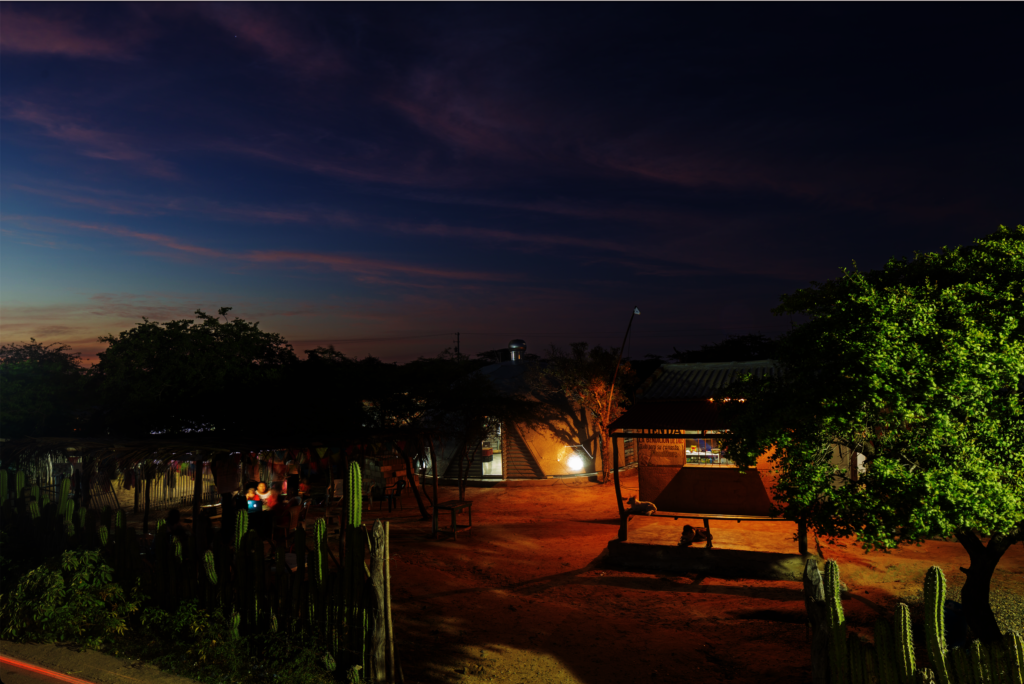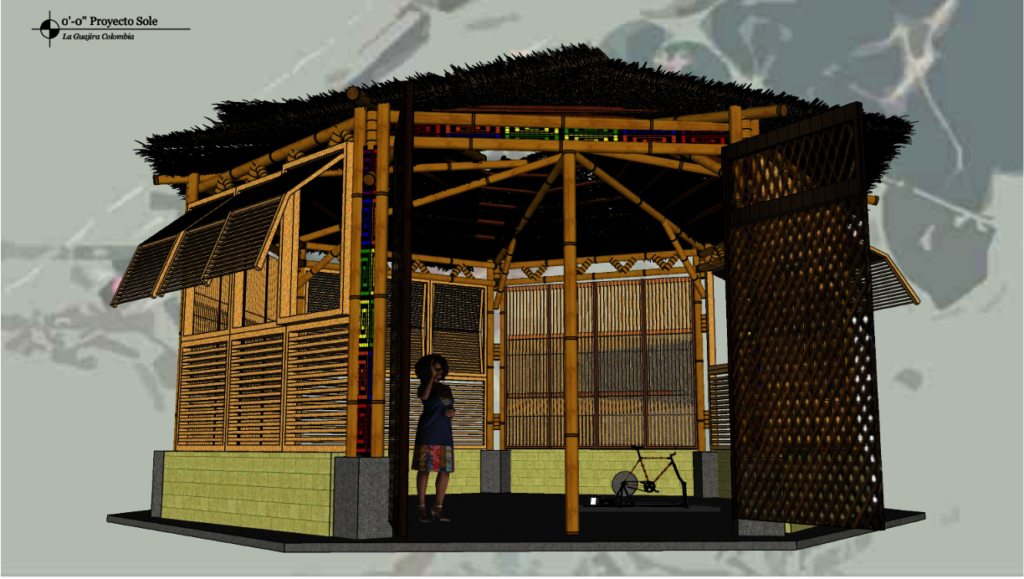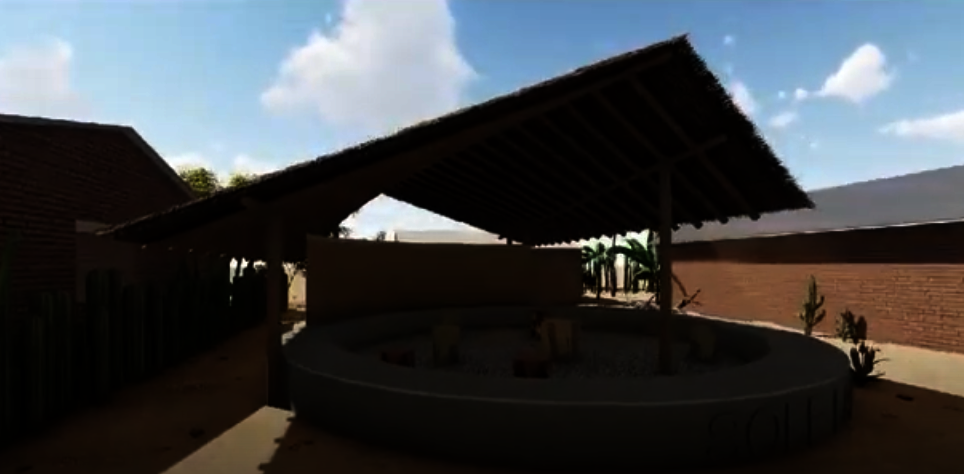By Belen Sevilla Morillo | Project and Community Gardener
Doing SOLE is simple, you just need a space, a few computers, four or five people per device and Big Questions. A SOLE doesn't work if you don't have these minimum conditions.
In SOLE Colombia we prefer public spaces, because we understand that if a space is public everyone can use it. Sometimes this is not the case. Many times public spaces have many restrictions to be used, especially in remote places... For example, the school is a public space, but if you are not going to school because you are an adult, you cannot pass. You also can't pass if the school is not open, and even then, the entrance has a lot of restrictions. Maybe a library. For example, if a group of people of different ages wanted to go into a library to look for things together, they would have problems because you can't make noise in libraries. Nor would they be able to enter during non-working hours, because the person in charge of the space works with a work schedule and then closes.
Normally, people want to learn new things when they are not working or studying. They are looking to get together to do something fun in those spaces where they are not working. Someone will want to think about entrepreneurship while not fulfilling other responsibilities. Mothers will form a nurturing circle when they don't have their families clamoring for their presence, or can reconcile with their partners or circle of support. Children need a place to do school work outside of school hours. Grandparents may want to tell stories or teach dominoes to the younger ones on the weekend, or it may be easier to have a film festival in the evening hours.
A SOLE Lab is for all of these things. Because a SOLE Lab is a space managed and organized autonomously, by the community itself. It is a place to learn, dialogue and take action together, using technology... as and when we want!
And when SOLE Colombia decided to build this SOLE Lab in Boca de Camarones as an alternative included in the Connectivity Solutions Guide, we could not escape the question of what would this SOLE Lab look like? The image that came to our mind was this one in which you enter an address in google maps and it shows you the picture of the place you entered. You can turn the photo around 360º and you have a real view of the place... and what would we see? We got butterflies in our stomachs just thinking about it. maybe it would be like a spaceship, or would it have a more ethnic design? would it be an open space, or something more enclosed? maybe with a garden? how nice if it was a living thing!
What was clear was that we could not make this decision alone, it had to be up to the community to decide what they wanted this place to look like. So how to propose several alternatives to them? Once again, we set ourselves to the task: we looked for three architectural proposals to put out to competition. Our friends from Bamburra, Guaduatech and Palafito presented their designs and explained to Elainer and his family what each structure consisted of and why they had thought of it that way for them. It was a very interesting day, where, after evaluating all the important aspects to make a decision, Elainer and his family announced that Guaduatech and its dome were the chosen ones.
Guaduatech builds domes in guadua -a variety of bamboo whose use is so ancient that bamboo imprints have been found in constructions 9500 years old. It was made by the Incas with this resource during the pre-conquest era, and was responsible for protecting the Indians and even small villages from the siege of the Spaniards by hiding them behind its thickets - and recycled tetrapak sheets, which repel heat and insulate against the cold. Due to its design, with an opening at the top and cross ventilation, the air circulates inside the structure, maintaining temperature conditions that make it suitable for indoor activities, regardless of the conditions outside. Additionally, it has an electrical pre-installation that allows the use and charging of electronic devices, the provision of audiovisual equipment and internet connection.
And we understood that in Boca de Camarones, if we wanted it to be a space available to everyone, we had to turn to a family like Elainer's, who would take charge and support this project with the hope of something that remains, regardless of governments and political changes, and schedules, and keys. Sugelis knows that a place for the community has to be available to everyone, especially those who need it most.
I cannot describe the emotion of the Ipuana family when they saw that structure that seemed to come from another planet, that dome installed on the plot of land next to Sugelis' store... The House of Goku, as Elainer called it.
—----------------------------------------
Y llegó la hora de las alianzas ¿qué aspecto tendrá el SOLE Lab?
Hacer SOLE es sencillo, sólo necesitas un espacio, unos cuantos computadores, cuatro o cinco personas por dispositivo y Grandes Preguntas. Un SOLE no funciona si no tienes estas condiciones mínimas.
En SOLE Colombia preferimos los espacios públicos, porque entendemos que si un espacio es público todo el mundo puede usarlo. A veces esto no es así. Muchas veces los espacios públicos tienen muchas restricciones para poder usarse, en especial en lugares alejados… Por ejemplo, la escuela es un espacio público, pero si no estás yendo a la escuela porque eres un adulto, no puedes pasar. Tampoco puedes pasar si la escuela no está abierta y, aún así, la entrada tiene muchas restricciones. Por ejemplo, si un grupo de personas de edades variadas quisiera entrar en una biblioteca a buscar cosas juntos, tendrían problemas porque en las bibliotecas no se puede hacer ruido. Tampoco podrían entrar en un horario que no fuera laboral, porque la persona encargada del espacio trabaja con un horario laboral y luego, cierra.
Normalmente, las personas quieren aprender cosas nuevas en los momentos en que no están trabajando o estudiando. Buscan reunirse juntos a hacer algo divertido en esos espacios donde no se trabaja. Alguien querrá pensar en un emprendimiento mientras no está cumpliendo con otras responsabilidades. Las madres formarán un círculo de crianza cuando no tengan a sus familias reclamando su presencia, o puedan conciliar con sus parejas o círculo de apoyo. Los niños necesitan un lugar donde hacer los trabajos del colegio, fuera del horario escolar. Los abuelos querrán contar historias o enseñar a jugar dominó a los más jóvenes en el fin de semana, o será más fácil hacer un festival de cine en las horas de la tarde-noche.
Un SOLE Lab sirve para todo eso. Porque un SOLE Lab es un espacio gestionado y organizado de forma autónoma, por la propia comunidad. Es un lugar para aprender, dialogar y tomar acción juntos, usando la tecnología… ¡como y cuando queramos!
Y cuando en SOLE Colombia decidimos construir este SOLE Lab en Boca de Camarones como una alternativa incluida en la Guía de Soluciones de Conectividad, no podíamos escapar a la pregunta de ¿cómo se vería este SOLE Lab? La imagen que nos venía a la mente era esta en la que metes una dirección en google maps y te muestra la foto del lugar que metiste. Puedes dar la vuelta 360º a la foto y tienes una vista real del lugar… ¿y qué veríamos? Nos entraban mariposas en el estómago de sólo pensarlo. ¿Quizá sería como una nave espacial, o tendría un diseño más étnico? ¿sería un espacio abierto, o algo más cerrado? ¿quizá con un jardín? ¡qué bonito que fuera un ser vivo!
Lo que estaba claro era que no podíamos tomar esta decisión sólos, tenía que ser la comunidad quien decidiera cómo quería que se viera este lugar. Entonces ¿cómo proponerles varias alternativas? Una vez más, nos pusimos a la tarea: buscamos tres propuestas arquitectónicas para ponerlas a concurso. Nuestros amigos de Bamburra, Guaduatech y Palafito nos presentaron sus diseños y explicaron a Elainer y su familia en qué consistía cada estructura y por qué la habían pensado así para ellos. Fue una jornada interesantísima, donde, una vez valorados todos los aspectos importantes para tomar una decisión, Eyeliner y su familia anunciaron que Guaduatech y su domo eran los elegidos.
Guaduatech construye domos en guadua -una variedad de bambú cuyo uso es tan antiguo que, se han encontrado improntas de bambú en construcciones de 9500 años de antigüedad. Fue realizada por los incas con este recurso durante la época de preconquista, y fue la encargada de proteger a los indios y hasta pequeños pueblos del asedio de los españoles escondiéndolos tras sus espesuras- y láminas de tetrapak reciclado, que repelen el calor y aíslan contra el frío. Por su diseño, con una abertura en la parte superior y ventilación cruzada, el aire circula en el interior de la estructura, manteniendo unas condiciones de temperatura que lo hacen apto para desarrollar actividades en el interior, independientemente de las condiciones en el exterior. Adicionalmente, cuenta con una preinstalación eléctrica que permite el uso y carga de aparatos electrónicos, la disposición de equipos audiovisuales y la conexión a internet.
Y entendimos que en Boca de Camarones, si queríamos que fuera un espacio disponible para todos, teníamos que recurrir a una familia como la de Elainer, que se hiciera cargo y respaldara este proyecto con la esperanza de algo que permanece, independientemente de los gobiernos y de los cambios políticos, y de los horarios, y de las llaves. Sugelis sabe que un lugar para la comunidad tiene que estar disponible para todos, especialmente para quienes más lo necesitan.
No puedo describir la emoción de la familia Ipuana cuando visualizaron aquella estructura que parecía venir de otro planeta, aquel domo instalado en la parcela vecina a la tienda de Sugelis… La Casa de Goku, la bautizó Elainer.
Project reports on GlobalGiving are posted directly to globalgiving.org by Project Leaders as they are completed, generally every 3-4 months. To protect the integrity of these documents, GlobalGiving does not alter them; therefore you may find some language or formatting issues.
If you donate to this project or have donated to this project, you can recieve an email when this project posts a report. You can also subscribe for reports without donating.
Support this important cause by creating a personalized fundraising page.
Start a Fundraiser

